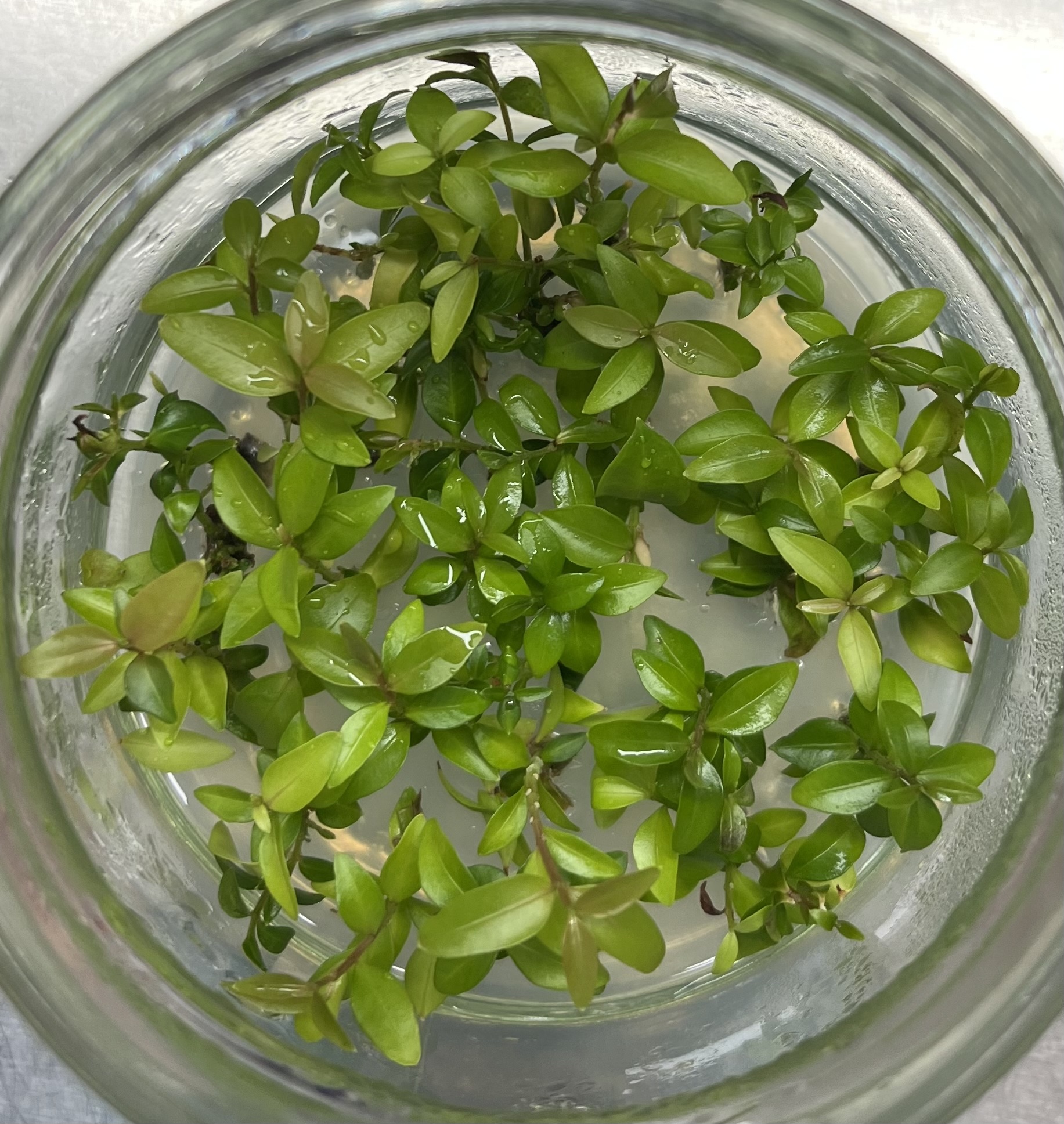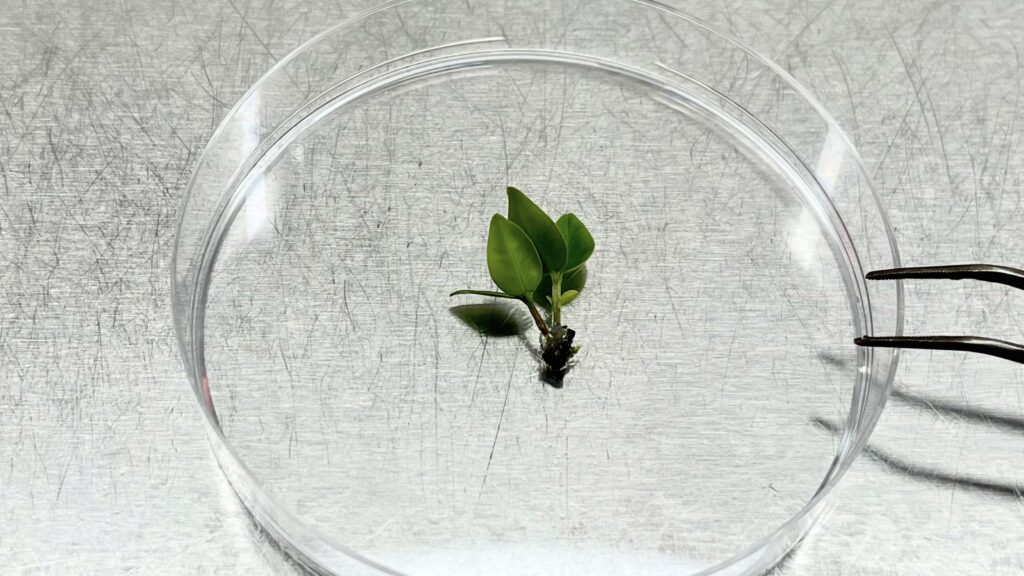Scientists in Australia are deep-freezing the shoot tips of a critically endangered tree to preserve its DNA in case the species goes extinct.
Only 380 specimens of the angle-stemmed myrtle (Gossia gonoclada) remain in the wild, with about 300 of them concentrated in the City of Logan area in southeast Queensland. If scientists manage to cryopreserve a diverse collection of genes from the species, there is a good chance they could resurrect it if it ever dies out, researchers said.
The angle-stemmed myrtle is a small tree that grows along waterways in Australia’s dry rainforests. It has glossy leaves, square stems and sweet, fleshy fruit that may be a food source for bats and birds, Hayward said. “There has been limited research on its ecological interactions but it likely aids in river bank stability and biodiversity,” she said.
A combination of habitat loss, rising temperatures and a deadly fungal disease called myrtle rust has drastically reduced the number of angle-stemmed myrtle plants in Australia since 2010. Myrtle rust is caused by the exotic fungus Austropuccinia psidii, which attacks the newly grown parts of trees and shrubs in the Myrtaceae family, deforming the plants’ leaves, stunting their growth and decreasing their fertility.
To save the angle-stemmed myrtle from extinction, scientists are designing a method to freeze plant tissues that can later regenerate a full tree whenever needed. Although seeds contain reproductive material, they are not suitable for this project, both because of their reduced fertility from myrtle rust infections and because they likely won’t survive long-term cryopreservation, Hayward said.
Related: ‘It is our obligation to future generations’: Scientists want thousands of human poop samples for microbe ‘doomsday vault’
So instead, Hayward and Jingyin Bao, a doctoral student at the University of Queensland, plan on preserving the angle-stemmed myrtle’s shoot tips — the uppermost and actively growing parts of the plant — at ultra-low temperatures of minus 321 degrees Fahrenheit (minus 196 degrees Celsius).
This involves growing sterile shoots in a jelly and harvesting the tips before treating them with a cryoprotective solution and freezing them in liquid nitrogen, ABC News reported. Cryoprotective solutions protect plant cells during freezing by minimizing the formation of damaging ice crystals, Hayward said. Without these solutions, water inside the cells would expand, and the cells would burst; but with the solutions, the water turns “glassy” instead, she said.

The method already works for the sweet myrtle (Gossia fragrantissima), which is a small tree closely related to the angle-stemmed myrtle. After freezing sweet myrtle shoot tips, Bao achieved a 100% survival rate and managed to regrow all the plants, Hayward said. “We are transitioning this to gonoclada with some success and still working to improve the survival,” she said.
Once the researchers land on a method for the angle-stemmed myrtle, they still need to make sure that they have enough genetic diversity in their samples to regrow a healthy population of trees.
“It is important that there is sufficient genetic diversity saved to provide the best chance of species survival in the future, especially if there happens to be any natural tolerance to myrtle rust or changing climate conditions,” Hayward said. “Given the threats to this species in the wild due to habitat loss and invasive species including myrtle rust this needs to happen fast.”
So far, Hayward and Bao haven’t found any disease- or climate-resistant specimens in their sample, but City of Logan authorities and their partners are working to identify resistant individuals, Hayward said. “We want to preserve the most diverse individuals, whether tolerant or not, to provide a basis for future breeding,” she explained.
And it’s not just the angle-stemmed myrtle that needs preserving in this way, Hayward said. “We need Australia and the world to implement cryobanks to ensure we can bank the diversity of … foods and endangered plants for future generations,” she said.
